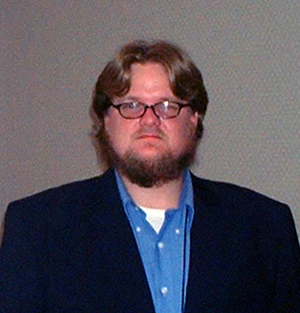Kendric J. Nelson
Ph. D. University of Utah

B.S. University of Wisconsin-La Crosse
Prussian Blue Magnets
Prussian blue analogues (PBA�s) synthesized from solvated salts of first row transition metals and hexacyanometallates form numerous magnetically ordered solids with ordering temperatures (Tc) as high as ~100 oC.¹ The Tc�s of PBA�s can be increased by using early first row transition metal hexacyanometallates, e.g., VII and CrIII, and reacting them with other solvated first row transtion metal ion sources.²‚³ The focus of my research is on using VIII and CrII cyanometallates as the primary building blocks to synthesize new PBA�s.
¹ M. Verdaguer, G. Girolami, in Magnetism: Molecules to Materials V, J. S. Miller
and M. Drillon, Eds. 2004, 5, 283.
² �. Hatlevik, W. Buschmann, J. Zhang, J. Manson, J. S. Miller, Adv. Mater. 1999,
11, 914.
³ S. M. Holmes, G. S. Girolami, J. Am. Chem. Soc. 1999, 121, 5593.
Undergraduate Work
Performed research in Professor Robert W. McGaff's research group whose focus is on the rational design and synthesis to extended solid-state compounds using transition metal building blocks and linking them together with multifunctional ligands, eg 1,4-dicyanobenzene.
Publications (Undergraduate):
K. J. Nelson, I. A. Guzei, G. S. Lund, R. W. McGaff, �Copper(II) methoxide: direct solventothermal synthesis and X-ray crystal structure Polyhedron2002, 21, 2017.
K. J. Nelson, R. W. McGaff, D. R. Powell, A tetranuclear dianion consisting of linked dirhenate units arranged in an infinite one-dimensional chain through ligand-ligand hydrogen bonding in the solid state. Inorg. Chim. Acta2000, 304, 130.
